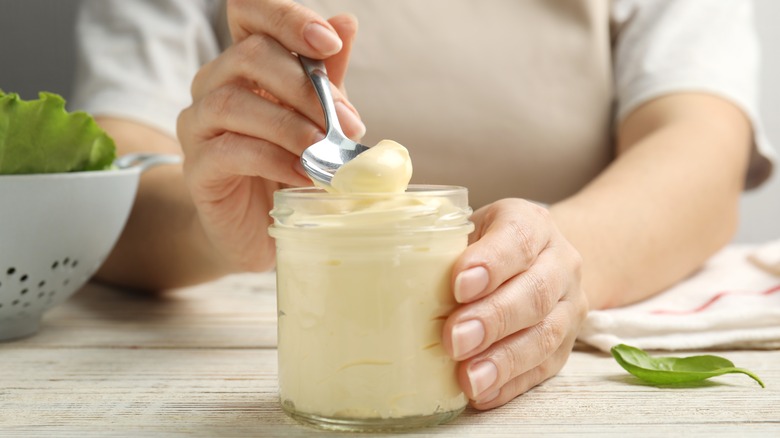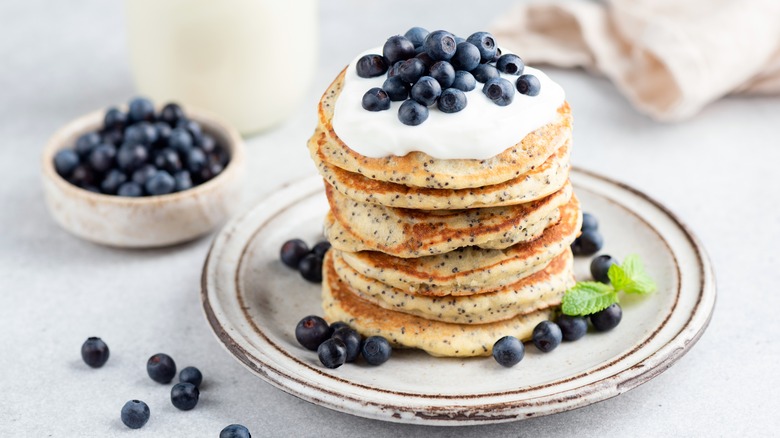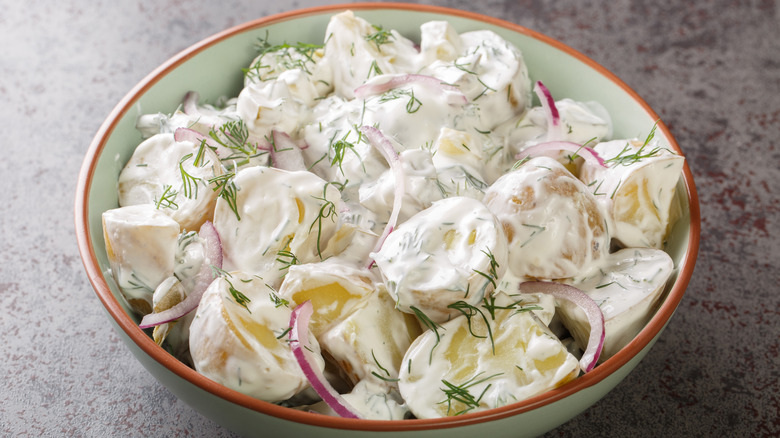Why Mayo Doesn't Work As A Yogurt Substitute
There is nothing worse than rummaging around in the refrigerator for the item you need to complete a specific recipe and coming up with nothing. You could have sworn that you had a tub of yogurt, — like you always do — but for some reason, right when you need it, it is nowhere to be found. Your eyes start to scan the shelves while you think, "What other ingredients can I substitute for yogurt?" You reach for that tub on the door thinking that the scoopable texture and creamy taste of mayonnaise may be a great stand-in, but that might be a mistake.
When you are using yogurt in a recipe, it is not just for the creaminess — it is also for the tangy flavor and acidic composition. This is especially true in baking. Sodium bicarbonate, more commonly known as baking soda, acts as a leavening agent in your baked goods. But, in order for baking soda to do its thing and produce the rise that you need for cakes, muffins, and pancakes, it must be activated by an acid. Mayo just does not have enough acid to make this chemical reaction happen.
Mayo is a no-go swap in baking
Mayonnaise may be able to stand in for yogurt in baked goods if the recipe only calls for baking powder, not soda. Since it is basically baking soda with an acidic component already mixed in, it does not need the addition of yogurt to activate it. Keep in mind though that mayonnaise is essentially eggs and oil and does not contain any dairy, so it is not the most natural substitution for yogurt. It has a totally separate flavor profile as well and lacks that dairy creaminess.
If you have it on hand, try reaching for a cultured dairy product like buttermilk, sour cream, or crème fraîche. In a real pinch, the addition of lemon juice can transform milk into buttermilk. Of course, regular yogurt and Greek-style yogurt are also very similar and can be used interchangeably. If mayo is really your only option, you may be better off pivoting and finding a baked good recipe that specifically includes it — there are many, and some cooks swear by the addition of the condiment in everything from biscuits to buttercream.
Are there times when you can use mayo as a yogurt substitute?
If you do not have to worry about creating a chemical reaction, and you don't have any of the above-mentioned substitutions, mayonnaise may still work in recipes that do not rely too heavily on exact measurements. Sauces, salad dressings, sandwich spreads, dips, and any kind of deli-type salad like potato, egg, tuna, chicken, and pasta salads will all be great with mayo instead of yogurt.
However, mayo is sweeter and fattier than yogurt, so you will need to adjust some of the other ingredients to balance out the taste. You may find that reducing additional oil will keep the mix from being overly rich. Similarly, you'll also need to add something acidic like lemon juice, vinegar, or citrus zest to get that tangy taste. The addition of tender herbs like parsley, chives, cilantro, dill, basil, and mint can liven up mayo — as can bright spices like sumac, coriander, turmeric, or dried mango powder called amchur. Raw garlic, fresh ginger, scallions, or red onion can also add some necessary zing.



